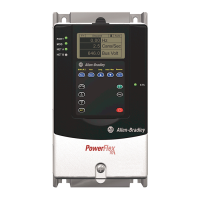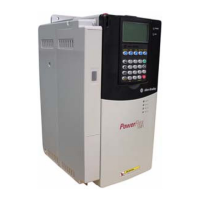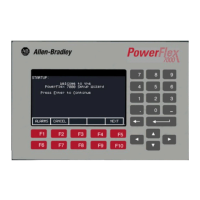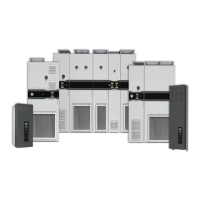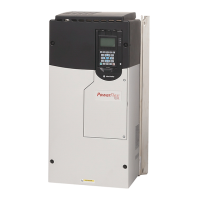2-46 Bus Regulation
Bus Regulation [Bus Reg Gain]
[Bus Reg Mode A, B]
Some applications, such as the hide tanning shown here, create an
intermittent regeneration condition. When the hides are being lifted (on the
left), motoring current exists. However, when the hides reach the top and
fall onto a paddle, the motor regenerates power back to the drive, creating
the potential for a nuisance overvoltage trip.
When an AC motor regenerates energy from the load, the drive DC bus
voltage increases unless there is another means (dynamic braking chopper/
resistor, etc.) of dissipating the energy.
Without bus regulation, if the bus voltage exceeds the operating limit
established by the power components of the drive, the drive will fault,
shutting off the output devices to protect itself from excess voltage.
With bus regulation enabled, the drive can respond to the increasing voltage
by advancing the output frequency until the regeneration is counteracted.
This keeps the bus voltage at a regulated level below the trip point.
Since the same integrator is used for bus regulation as for normal frequency
ramp operation, a smooth transition between normal frequency ramp
operation and bus regulation is accomplished.
The regulator senses a rapid rise in the bus voltage and activates prior to
actually reaching the internal bus voltage regulation set point Vreg. This is
important since it minimizes overshoot in the bus voltage when bus
regulation begins thereby attempting to avoid an over-voltage fault.
Motoring Regenerating
0V Fault @V
bus
Max
Drive Output Shut Off
Ch1
Ch3
Single Seq 500 S/s
100mV
500mV
Ch2 100mV M 1.00s Ch3 1.47
V
3
2
1
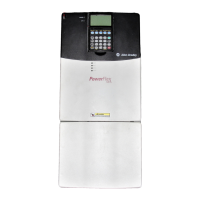
